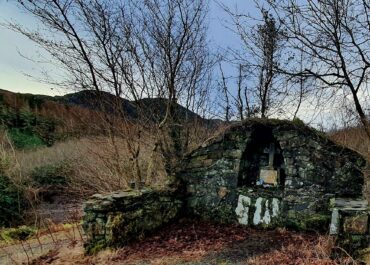Mass-rock, Sandhill, Co. Donegal
Hidden amongst the rolling hills of Sandhill in County Donegal stands a weathered stone altar, a silent witness to one of the most turbulent periods in Irish Catholic history.
Mass-rock, Sandhill, Co. Donegal
This unassuming arrangement of rocks served as a clandestine place of worship during the Penal times, roughly spanning from the 1690s to the 1750s, when harsh laws prohibited Catholics from practising their faith openly. Here, beneath the open sky and away from the watchful eyes of authorities, priests would celebrate mass for local communities who risked punishment to maintain their religious traditions.
The mass rock represents a remarkable chapter in Irish resistance and religious perseverance. During the Penal era, Catholic clergy faced execution or transportation if caught conducting services, whilst those attending mass could face heavy fines or imprisonment. These outdoor altars, scattered across Ireland’s countryside, became essential gathering places where communities would post lookouts whilst mass was celebrated, often before dawn or under cover of darkness. The natural stone formations provided both a practical altar surface and helped the sites blend into the landscape, making them harder for authorities to identify.
Today, this particular mass rock has been thoughtfully preserved for future generations. A commemorative plaque marks the site’s historical significance, and improved public access allows visitors to connect with this poignant piece of Ireland’s religious heritage. The altar stands as a tangible reminder of a time when faith required courage, and when the simple act of attending mass was an act of defiance. Originally documented by Paul Walsh in October 2013, the site continues to draw those interested in understanding how Irish Catholics maintained their spiritual life during one of the most oppressive periods in the nation’s history.


